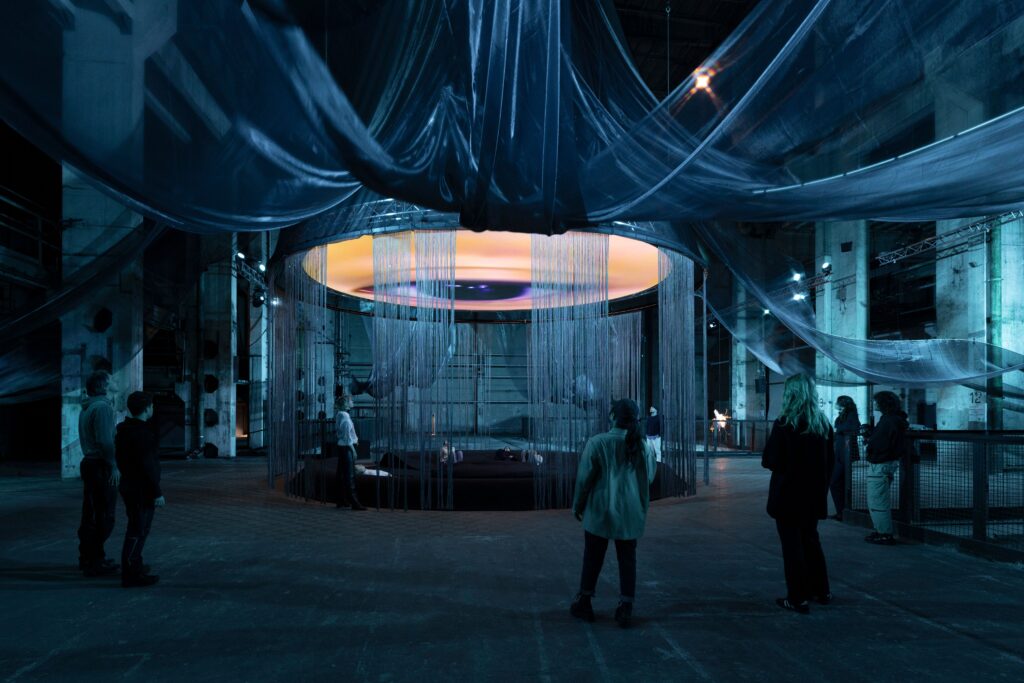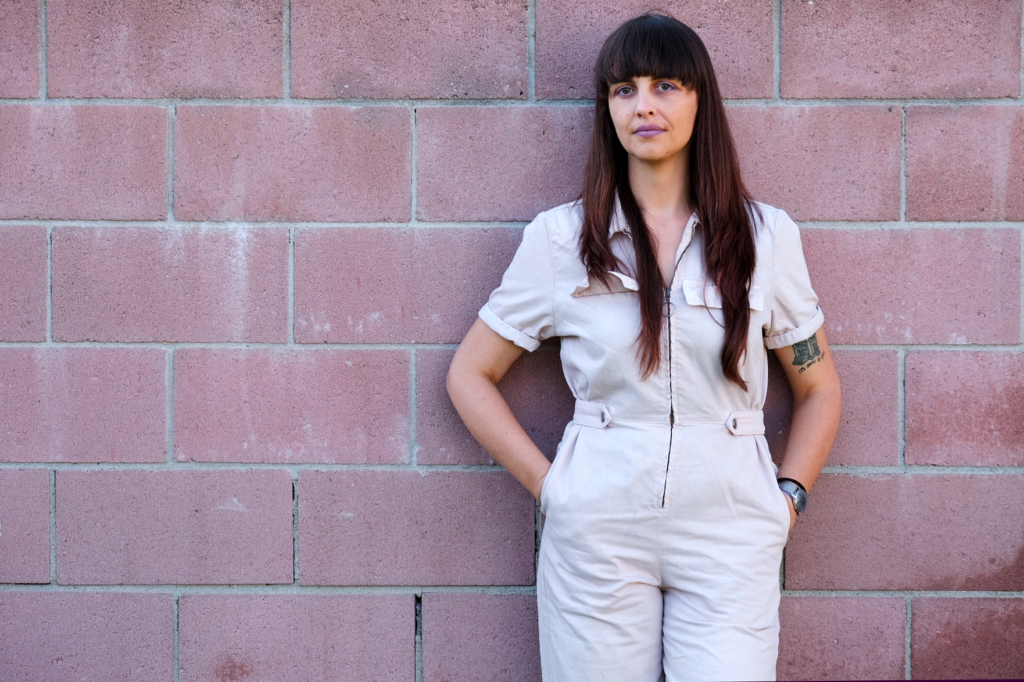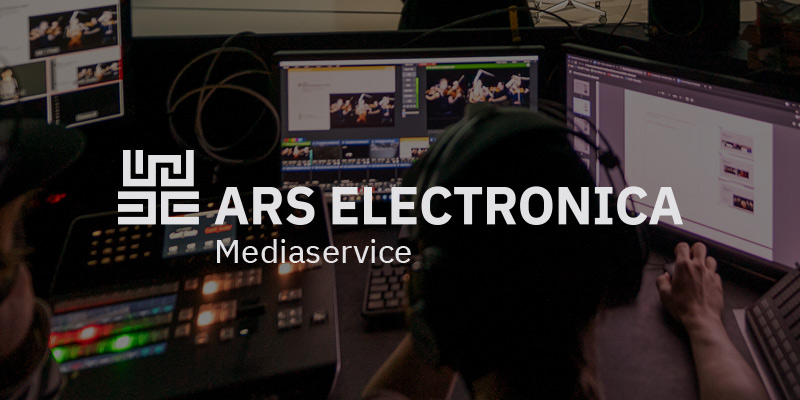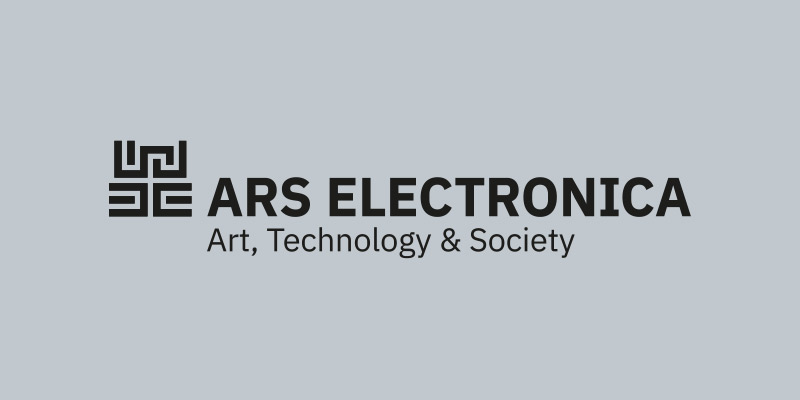- Press release as PDF
- Photos via Flickr
- More about STARTS Prize & Jury 2025
- All about the winners 2025 including Jury Statements
- Ars Electronica Blog: Interviews with STARTS Prize winners 2025
- Accreditation: Ars Electronica Festival 2025
(Linz/Brussels, June 4, 2025) The European Commission’s 2025 STARTS Prize has been decided on. Now in its tenth year, the initiative received 1,657 submissions from 90 countries.
This year’s “Grand Prize – Innovative Collaboration,” endowed with €20,000, goes to the LAS Art Foundation (DE) for its artistic research initiative Sensing Quantum. The program promotes creative engagement with quantum technologies and fosters an interdisciplinary dialogue between artists and scientists with the goal of translating the dynamic field of quantum computing into immersive, tangible experiences. The “Grand Prize – Artistic Exploration,” also endowed with €20,000, goes to artist Sarah Ciston (US) for their project AI War Cloud Database. The database shows how commonly used AI systems are being deployed in warfare—automatically and with serious consequences for civilians. AI War Cloud Database provides an overview of system types, their manufacturers, and their use in both military and commercial contexts.
The STARTS Prize of the European Commission honors innovative projects that address social, ecological, and economic challenges through interdisciplinary collaboration. Since 2016, the annual competition has been organized and run by Ars Electronica in Linz.
Exhibition at Ars Electronica Festival 2025
Both winning projects will be presented from September 3 to 7 at the 2025 Ars Electronica Festival in Linz. The jury—consisting of Irini Papadimitriou (UK), Veronica D’Souza (DK), Thomas Gegenhuber (AT), Francesca Bria (IT), and Asako Tomura (JP)—also awarded 10 Honorary Mentions and 18 Nominations. A selection of these will also be showcased at this year’s Ars Electronica. The official award ceremony of the STARTS Prize is part of the Prix Ars Electronica Award Ceremony and will take place on Thursday, September 4, 2025, at the Design Center Linz.
The S+T+ARTS Initiative in Figures
The STARTS Prize is part of the European Commission’s long-term STARTS initiative committed to European innovation policy. It focuses on initiatives at the intersection of science, technology, and the arts that are dedicated to co-creating a positive and collective future. Since 2016, 381 residencies have been funded with more than €19 million, and a total of 274 STARTS Prize projects have been awarded. Between 2016 and 2024, a total of 17,243 projects from 124 different countries were submitted to the competition, which is endowed with €40,000 annually.
The STARTS Prize is supported by a consortium of European partner institutions in the context of the STARTS Ec(h)o project. These include INOVA+, T6 Ecosystems, La French Tech Grande Provence, Sónar, the Salzburg Festival, TUD Technische Universität Dresden, the Media Solution Center Baden-Württemberg, and the High-Performance Computing Center Stuttgart.
S+T+ARTS PRIZE ’25
Grand Prize – Innovative Collaboration
Awarded for the innovative collaboration between industry or technology and the arts (and the cultural and creative sectors in general) that opens new pathways for innovation.
Sensing Quantum
LAS Art Foundation (DE)
„[…] Sensing Quantum opens up the complex world of quantum science to society at large. It is a powerful example of how art and culture can make emerging technologies more transparent, more democratic, and more human. While Europe builds the physical and digital infrastructure of the future—AI factories, quantum labs, supercomputers—this program offers a vital addition. It transforms critical technologies, and abstract concepts into stories, complex systems into emotions, and scientific infrastructure into shared experience.“
excerpt from the jury statement
2025 is named the International Year of Quantum, marking the growing impact of quantum technologies on society. It highlights the transformative potential of quantum science and its role in shaping a more inclusive and connected world. These systems are beginning to radically transform computing, communication, and our very understanding of reality, yet for most people, they remain difficult to grasp. Without better education, public discussion, and cultural interpretation, this knowledge will stay in the hands of a few experts. This risks creating even bigger gaps in understanding and access to these powerful tools.
To bridge the gaps between the invisible, the speculative, and the evolving role of quantum technologies in our lives, Sensing Quantum, a long-term artistic research initiative by LAS Art Foundation, brings together artists, scientists, and thinkers to create critical and artistic languages around these emerging technologies. The initiative includes new commissions, a symposium, a publication, and an ongoing educational program. One example is Laure Prouvost’s multi-sensory installation WE FELT A STAR DYING. It weaves direct experimentation with a quantum computer into a wider reflection on what it means to open oneself to the quantum realm. The artist asks: “What might it feel like to sense reality from a quantum perspective?”
As quantum technologies become part of everyday life, it is important that more people, not just scientists, can understand and shape how they are used. LAS Art Foundation shows how early engagement through art and culture can make these complex topics more relatable, while also helping society think about their ethical and social impact.
Credits
Commissioner: LAS Art Foundation
Research Partner: QuantumLeaks Foundation / Max Planck Foundation
Scientific Consultant: Jülich Forschungszentrum
Lead Partner Education: Volkswagen Group
Co-Commissioner of Laure Prouvost’s WE FELT A STAR DYING and the Sensing Quantum publication: OGR Torino Sensing Quantum is presented as part of 2025 International Year of Quantum Science and Technology (IYQ).
S+T+ARTS PRIZE ’25
Grand Prize – Artistic Exploration
Awarded for artistic exploration and art works where appropriation by the arts has a strong potential to influence or alter the use, deployment, or perception of technology.
AI War Cloud Database
Sarah Ciston (US)
“By tracing the links between commercial AI and military infrastructure, Ciston exposes a hidden feedback loop—where tools of convenience become tools of control. At a time of growing geopolitical tensions, AI arms races, and rearmament efforts across Europe and globally, this work underscores the need for democratic oversight, ethical governance, and civic awareness in shaping our technological future. […] In the spirit of the STARTS Prize, this work exemplifies the power of art and research to illuminate complex systems—and to invite us all to take part in shaping them.”
excerpt from the jury statement
We use AI every day–on our phones, in online searches, and on social media–yet we rarely consider how the same technologies are used in other, more troubling ways. The AI War Cloud Database exposes these overlaps, cataloguing AI systems used to automate decisions in warfare and mapping where similar technologies appear in everyday tools. By making these hidden connections visible, the project shows how the same machine learning systems drive both commercial applications and military operations.
The project builds a continuously updated online platform that presents a taxonomy of AI decision-making systems, tracing their development across sectors and borders. By clicking on a product or company, users explore connections between corporations, governments, and technologies and trace direct lines between them. For example, generative AI trained by low-wage workers in the Global South powers both Google searches and military decision making that determines where drones are deployed and who lives and dies.
AI War Cloud Database makes visible the infrastructures and actors behind AI development. By doing so, it challenges the power of private companies and the lack of transparency in how AI is developed and used. For Europe, this is urgent: building digital sovereignty is important, but how we build and manage these systems matters. If we invest in technology without clear values, we risk creating the same problems and dependencies we are trying to avoid. The project forces us to think about where we want to go next and what choices we make as users, developers, and investors of AI systems.
Credits
Design, programming, research, writing: Sarah Ciston
With thanks to Claire Carroll, Kate Crawford, Ariana Dongus, Vladan Joler, Pedro Oliveira, Miller Puckette, Corbinian Ruckerbauer, Nataša Vukajlovic, Ben Wagner and the AI Futures Lab, Thorsten Wetzling, Cambridge Digital Humanities, and the Center for Advanced Internet Studies for discussions and support contributing to the work.
S+T+ARTS PRIZE ’25 – Honorary Mentions
Synthetic Memories
Domestic Data Streamers (ES)
Synthetic Memories uses generative AI to reconstruct and safeguard personal memories that are at risk of being lost or were never visually documented. Through guided sessions, participants describe their special memories, and trained interviewers then transform these memories into AI-generated visual representations—tangible images refined collaboratively to strengthen emotional connections. This process supports individuals affected by displacement, conflict, or neurodegenerative diseases in reconnecting with their past and retaining a sense of identity. By working with institutions such as the University of Toronto, the University of British Columbia, the University of Amsterdam, and the University of Southern California, the project continues to expand through scientific research and explores the impact of this method in supporting people with early-stage dementia.
The project sits at the intersection of art, technology, and social innovation. It fosters intergenerational and cross-cultural dialogue while addressing ethical frictions between subjective memory and AI-generated content. It serves as a prototype for the public sector, health institutions, museums, and cultural organizations worldwide to engage with subjective memory preservation.
Credits
Artist collective: Domestic Data Streamers
Curation: Domestic Data Streamers and José Luis de Vicente
Design and mediation of participatory workshops: Anais Esmerado
Associate researcher: Prof. Alex Mihailidi
Guest artist: Anna Roura
Kataula
Ana Mikadze (GE)
Kataula is a research-based artistic project set in the limestone quarries of Kavtiskhevi, Georgia, a village deeply affected by extractive mining practices. It confronts Georgian legislation with the fact that it permits mining and resource exploitation until depletion and exposes the colonial legacies of German industrial intervention, particularly by Heidelberg Materials, the world’s second largest cement producer. In doing so, the project challenges decision makers to invest in material innovation to support sustainable, locally grounded solutions for environmental and social impact.
The project reclaims materials of industrial erasure: cement tiles, made from the same Heidelberg cement, bear photographic imprints of Kavtiskhevi’s residents and plants, rendering the erasure visible. Meanwhile, quarry waste foraged on site is repurposed into ceramics and glazes, transforming them into artifacts resisting commodification. By embedding memory into the very materials of destruction, Kataula challenges Heidelberg Materials’ sustainability narrative and reveals the environmental and cultural cost of extractivism.
Credits
Artist: Ana Mikadze
Kataula inaugurated at Design Investigations, University of Applied Arts Vienna
Special thanks: to my neighbors, co-organizers, and group members in Kavtiskhevi.
Thanks to: Nina Khutsishvili, Mirian Jugheli, and David Gurgenidze for their support for the cause and drone footage.
Seeing Echoes in the Mind of a Whale
Marshmallow Laser Feast (GB)
Seeing Echoes in the Mind of a Whale is a large-scale video installation that investigates the sonic world of whales, exploring how they navigate, communicate, and perceive their environment, far beyond the reach of human senses. Focused on bottlenose dolphins, humpback whales, and sperm whales observed along the Spanish coast, with recordings from the Mediterranean and beyond, the project explores the crucial role of sound for these marine mammals. It combines hydrophone recordings, underwater videography, scientific insights, and real-time computing to offer a multisensory experience.
Machine learning algorithms process underwater video data to extract information, thus creating visualizations that respond in real time to acoustic data. By translating scientific data into an immersive experience and merging bioacoustics and creativity, the installation invites reflection on the human impact on oceans and the importance of preserving marine ecosystems for a sustainable future.
Credits
Marshmallow Laser Feast: Ersin Han Ersin, Barnaby Steel, Robin McNicholas in collaboration with Tom Mustill and with the scientific support of the UPC Laboratory of Applied Bioacoustics (LAB
Scientific advisors & contributors, video and audio sources: Professor Michel André (LAB), Steffen De Vreese, MVM, PhD (LAB), Tom Mustill, John Ryan (MBARI), Howard Hall, Steve McNicholas & Luke Cresswell (Yes/No Productions), Daan Verhoeven, Misael Morales Vargas (Biosean), Open Planet (openplanet.org), Aguasonic (Freesound)
Commissioned by: Espacio Fundación Telefónica and DHub (Disseny Hub Barcelona)
Data Against Feminicide:
AI tools, transnational Community, and data activism
Isadora Cruxên (GB), Catherine D’Ignazio (US), Silvana Fumega (AR), Helena Suárez Val (UY)
Data Against Feminicide is a feminist participatory action research and technology design project that brings together data activists, artists, NGOs, communities, governments, and journalists to monitor feminicide and gender-based violence collaboratively. Rather than collecting data, the project strengthens existing grassroots efforts through co-designed digital tools, including AI and machine learning models tailored to local contexts.
Its three core aims are: understanding how feminicide data is produced and used globally; fostering a transnational community of practice through shared knowledge and visual storytelling; co-designing digital tools to support data production and communication about feminicide. Since 2023, the project has launched collaborative AI processes with human rights groups in Brazil and Kenya, hosted workshops and global community events, and published the open-access book Counting Feminicide with MIT Press. Data Against Feminicide develops feminist frameworks for AI development that center on collectivity, pluralism, care, and contextual specificity.
Credits
Led by Isadora Cruxên, Catherine D’Ignazio, Silvana Fumega, and Helena Suárez Val in partnership with Rahul Bhargava/MediaCloud, ILDA, Red Interamericana Anti-femicidio, and Harini Suresh/DISCO Lab.
Built in collaboration with a large community of civil society organizations. Students, translators, and illustrator Sofía Donner also provided key contributions.
With support from: ILDA (IDRC), MIT DUSP, NSF, and Queen Mary University of London.
Breathing Architecture
Filippo Nassetti (IT/GB)
Breathing Architecture explores how air flows through the complex structures of the human lungs. Artist Filippo Nassetti collaborated with researchers at the Barcelona Supercomputing Center to simulate the biological process of breathing. Using high-performance computing, the team tested many ideas. A breakthrough came unexpectedly when they noticed a similarity between the artist’s work and a microscope image of lung tissue. Since these tiny structures cannot be scanned with existing technologies, the team attempted to create a digital model. This led to a new method for simulating airflow and particle movement in alveolar tissue. This, in turn, opens up new possibilities for understanding how diseases like tuberculosis progress and can consequently assist the development of better treatments.
By merging scientific analysis and artistic imagination, the project thus opened a new path for exploring the human body: not just through numbers as in computational science, but through form, space, and beauty as in architecture.
Credits
Filippo Nassetti within S+T+ARTS AIR Residencies program (Barcelona Supercomputing Center, In4Art, Fundación Épica La Fura Dels Baus, Media Solution Center Baden-Württemberg / High Performance Computing Centre Stuttgart, Pina/Heka, RCR Lab·A, Sony CSL).
Coral Sonic Resilience
Marco Barotti (IT)
Coral Sonic Resilience is an interdisciplinary project that uses sound, sculpture, and solar energy to support the regeneration of coral reefs, vital ecosystems now silenced by climate change, pollution, and overfishing.
Building on the research of Timothy Lamont, which showed that healthy reef soundscapes attract marine life, Marco Barotti created 3D-printed underwater sculptures made of reef-compatible materials. Modeled after scans of bleached corals, these structures offer shelter for marine species and emit recordings of vibrant reef sounds through solar-powered underwater speakers. Developed with scientists from the University of Padova, the project monitors its ecological impact while also exhibiting sculptures in art spaces to raise public awareness. Coral Sonic Resilience merges art and science to explore sound as a tool for ecological restoration and calls for immediate collective action to protect and restore our oceans.
Credits
A project by Marco Barotti, in cooperation with The University of Padova, Relaxound, the Coral Restoration Project Feridhoo, and the Feridhoo Island Council.
Advice on acoustic ecology and research: Timothy Lamont
Research and project coordination: Antonio Beggiato
Research and data analysis: Federica Moscheo, Carola Chicco, Kilian Fix, Marco Patruno
Design: Studio Marco Barotti Solar station buoy and electronics design: Alles Blinkt
Computational Compost
Marina Otero Verzier (ES)
Computational Compost explores the environmental impact of data storage, particularly that generated in data centers, and proposes a synergy between technology and ecology. The project consists of a prototype that uses the heat emitted by computers running simulations of the universe’s origin to power a vermicomposting machine, where worms and microorganisms transform organic waste into fertile soil.
By linking celestial and biological processes, the project addresses the resource demands of digital infrastructures, such as energy, water, and other raw materials, and highlights the contribution of these digital infrastructures to climate change. The research was conducted in collaboration with the Donostia International Physics Center, and its result reveals how the byproducts of computation can sustain rather than degrade life. Accompanied by a film featuring a “quipu,” a pre-Columbian data-recording device, the project invites us to imagine alternative data futures, calling for a shift from extractive digital practices toward more regenerative and sustainable models.
Credits
Prototype: Marina Otero Verzier (ES) and Donostia International Physics Center
Film: Locument (Francisco Lobo (PT), Romea Muryń (PL)) and Marina Otero Verzier
Artistic direction, research, and prototype design: Marina Otero Verzier
Project coordination, research, 3D direction: Claudia Paredes
Film direction: Locument (Francisco Lobo, Romea Muryń); Marina Otero Verzier
Prototype development: Claudia Paredes, Fernando Fernande, Pablo Saiz
Production: Rocco Roncuzzi
In collaboration with the Donostia International Physics Center (DIPC)
Commissioned by Tabakalera
Coexist
Emergence Delft (NL)
Coexist is the outcome of artistic research on quantum technology by Emergence Delft, an interdisciplinary student team. By translating core concepts such as superposition and the measurement problem into an interactive installation, the project offers visitors a direct experience of quantum phenomena. Light passes through a set of polarizing filters, splitting into separate colors. This process mirrors how a quantum system cannot be observed and described from a single perspective, as it can exist in multiple states simultaneously. It metaphorically illustrates how isolated perspectives can lead to incomplete understanding.
Coexist not only demystifies abstract scientific ideas but also sparks reflection on how society perceives and integrates emerging quantum technologies. By bridging art, science, and public engagement, the project opens space for informed dialogue and encourages a more inclusive and thoughtful approach to technological change.
Credits
Thanks to: Ezra Sanders, Frederique Spruijt, Gijs van der Kerk, Haryn Jeon, Hugo de Jong, Ismail Music, Jor Frencken, Khruthika Kowkuntla, Loïs de Reus, Marcos Merino Francos, Nemo Anderson, Tom Hoevers, Valerie Schulpen, Wouter Schuit, Yasamin Zeinalizadeh
With support from:Delft University of Technology, QuTech, Quantum Delta NL, TNO
The Nebelivka Hypothesis
Forensic Architecture (UK), David Wengrow (UK)
The Nebelivka Hypothesis is a collaborative project between Forensic Architecture and archaeologist David Wengrow that rethinks the origins of urban life through the study of the 6,000-year-old Ukrainian settlement of Nebelivka. Unlike Mesopotamian cities, Nebelivka was organized without central hierarchies, domestic structures arranged in concentric rings around shared space.
Integrating digital technologies and computational science with archaeological practice and material analysis, the project uses an agent-based model to simulate how buildings might have been arranged in Nebelivka, exploring alternative urban configurations and social dynamics. It also explores the idea that such settlements contributed to the formation of Ukraine’s fertile soil. By reimagining soil and settlement as co-created, The Nebelivka Hypothesis proposes a radically different model of urbanism—non-extractive, egalitarian, and ecologically generative—, challenging dominant narratives of how cities emerge and function.
Credits
The Nebelivka Hypothesis was created in collaboration with The Center for Spatial Technologies (CST) and The Nebelivka Project.
Brain Processing Unit –
The Future Where Biology and Computer Integrate
SoftBank, Daito Manabe, The University of Tokyo – Special Exhibition (JP)
Brain Processing Unit – The Future Where Biology and Computer Integrate is the result of a collaboration between the SoftBank Research Institute of Advanced Technology, artist Daito Manabe, and the Ikeuchi Laboratory at the University of Tokyo.
The project explores the unique abilities of the human brain, such as adaptability and efficient learning, and how they might inform new computing paradigms. The team works with cerebral organoids (mini-brains grown from iPS cells), developing methods to stimulate them, analyze neural activity, and build interfaces to connect them with digital systems. In February 2025, they presented their findings in an exhibition showcasing the latest advances in cerebral organoid research and the vision they are pursuing through cutting-edge technologies.
Credits
Artist: Daito Manabe (Rhizomatiks, Studio Daito Manabe)
Organizer: SoftBank Research Institute of Advanced Technology
Collaborators: Daito Manabe, Studio Daito Manabe, Ikeuchi Lab (Institute of Industrial Science, University of Tokyo), INERTIA
Production team: Daito Manabe, 2bit, Ayumu Nagamatsu, Keke, Yuta Okuyama, Takao Inoue, Masaki Teruoka, Takahito Hosono, ARTE, Tatsuya Motoki, Tomoyuki Ichikawa, Aya Shinohara, strings VY
Statements
„The projects honored with this year’s STARTS Prize clearly demonstrate how important it is to discuss new technologies not only within expert circles, but to actively engage the public in dialogue—and to reflect together on how we, as a society, can benefit from current technological developments in a sustainable way. New challenges call for creative approaches that remind us: it is up to all of us to help shape the direction our society takes.“
Dietmar Prammer, Mayor of the City of Linz and & Owner Representative of Ars Electronica
„For the tenth time, Ars Electronica is organizing the STARTS Prize on behalf of the European Commission. A total of 1,657 submissions from 90 countries reflect the enormous international interest in innovative ideas at the intersection of science, technology, and art. In September, we will have the pleasure of welcoming the winners and their projects in person at the Ars Electronica Festival in Linz and presenting them with the coveted STARTS trophies. I’m already looking forward to exploring these innovative concepts on site at POSTCITY.“
Doris Lang-Mayerhofer, City Councilor for Culture, Chair of Ars Electronica’s Supervisory Board
S+T+ARTS PRIZE ’24 – Nominations
Museo Ocasional de un Paisaje Increíble
Ana Vogelfang (AR), Julieta García Vázquez (AR)
Lucid Life | Marama Ora
Christopher Bellamy (GB)
ASTRES: Mapping the Firmament
Playmodes Studio (ES)
The Call
Holly Herndon (US), Mat Dryhurst (US)
AI in the Sky
Laura Cinti (IT)
Zifzafa
Lawrence Abu Hamdan (LB)
Large Language Writer
Lucy Li (AT), Leo Mühlfeld (AT), Alan Schiegl (AT)
The Solar Share
DISNOVATION.ORG art collective (INT)
Emerald Black Latency
Mario Santamaría (ES)
Neutone Morpho — Real-time AI Audio Plugin and Platform
Neutone (INT)
Echorroes: Reflections on Tchaikovsky
Echorroes (GR)
Surpassing Limits of Virtuosity of Pianists by Exoskeleton
Shinichi Furuya (JP)
The Year of Weather
Open-weather (INT)
Light, Touch, Root (Hybrid)
Vanessa Amoah Opoku (DE)
SUN[Flower] Plasma
Victoria Vesna (US), Haley Marks (US), Walter Gekelman (US) Kevin Ramsey (US)
The Permanent and Insatiable
Xin Liu (CN)
HYBRIS
Yana Zschiedrich (DE)
Performative Ethnographies
Špela Petrič (SI)






